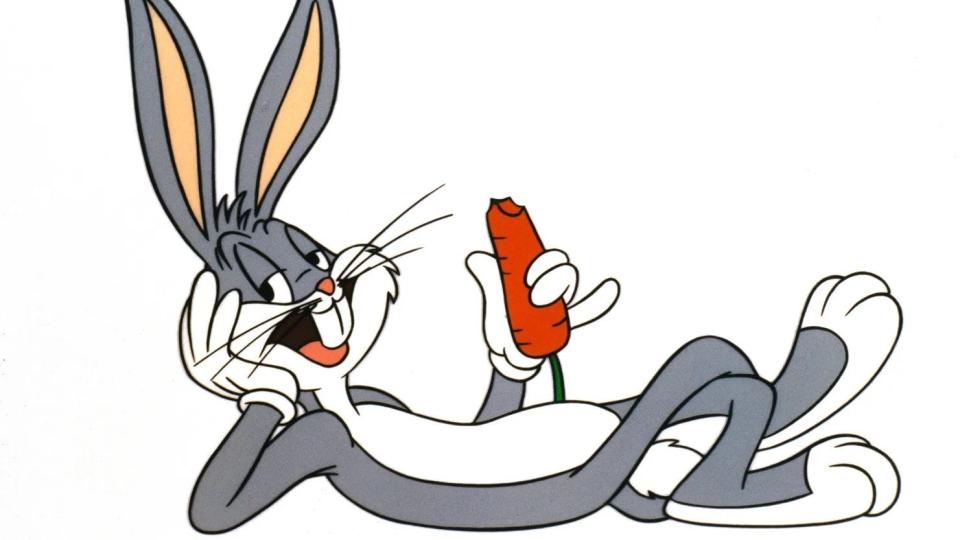This movie, a new style of comedy, swept the Oscars and inspired Bugs Bunny
Just 90 years ago, Bugs Bunny was born — prematurely.
The first Bugs Bunny cartoon wasn't, to be clear, until 1940. But the inspiration for the wascally wabbit — and several of his key traits — actually come from a famous movie made six years earlier.
"It Happened One Night," released in early 1934 — 90 years ago last month — is the quintessential Depression-era comedy.
It's the film that got Clark Gable his only Academy Award. It's the film that turned Frank Capra ("It's a Wonderful Life") into a bankable director.
It's the film that transformed poverty-row Columbia Pictures into a Hollywood contender. It's the first film to sweep the Oscars in all five key categories: Best Picture, Best Director, Best Actor, Best Actress and Best Screenplay ("One Flew Over the Cuckoo's Nest" and "The Silence of the Lambs" later duplicated the feat).
It also happened to be the favorite film of Friz Freleng, head animator at Warner Bros. — the studio whose roster of characters included Porky Pig, Daffy Duck, Yosemite Sam, Pepe Le Pew and Elmer Fudd. But Bugs Bunny was the star of the lot.
He was introduced, in his present form, in the 1940 cartoon "A Wild Hare" (four earlier cartoons featured a prototype version). His wisecracking demeanor, his long-stemmed carrot and his habit of calling everyone "Doc" made him an instant hit.

All of those traits were taken from "It Happened One Night."
Which had nothing to do with rabbits — but had a lot to do with introducing a new kind of humor, called "screwball comedy," to the movies. Bugs Bunny was just one beneficiary.
Pitching screwballs
"Screwball comedies" were fast-paced, wisecracking, preposterous. Typically, they involved a guy and a gal, trying to keep on their toes amid escalating craziness: pursuing cops, pursuing exes, escaped killers, escaped leopards.
"It Happened One Night" was less wild than some that came later — but its story of a runaway heiress (Claudette Colbert) and a hard-boiled reporter (Gable) who meet on a bus going from Miami to New York was a whole new ballgame to audiences in 1934.
They were not used to the snappy, informal repartee between Gable and Colbert. Nor were they used to seeing — from Hollywood — the unglamorous real world of the Depression: slummy motor courts, bus stations, diners.
Story continues below gallery.
And they could relate to the story: how spoiled brat Colbert comes down off her high horse, becomes a good sport and learns to cope with the hard times, like everyone else. Gable teaches her how to dig up her own food — hence that carrot with the long stem — and how to deal with a masher (Roscoe Karns) who calls everyone "Doc." Gable tells him he'll sic his gangster boss, "Bugs Dooley," on him.
She, famously, teaches him how to hitchhike (the leg, she demonstrates, is mightier than the thumb).
Legends about the film abound: how no one wanted to make it, how MGM lent Gable to Columbia as "punishment" for some misbehavior, how a scene in which he's shown taking off his clothes, revealing no undershirt, caused undershirt sales to plummet nationwide.
But if you want to get a sense of what America was like in 1934, there's no better movie. If you want to know what a screwball comedy is like, there's no more iconic one.
And if you want to know where Bugs Bunny came from, there's no film more telling. When director Peter Bogdanovich, in 1972, tried to resurrect the screwball genre for modern audiences, he simply called his film "What's Up, Doc?"
This article originally appeared on NorthJersey.com: 'It Happened One Night' swept the Oscars, inspired Bugs Bunny
